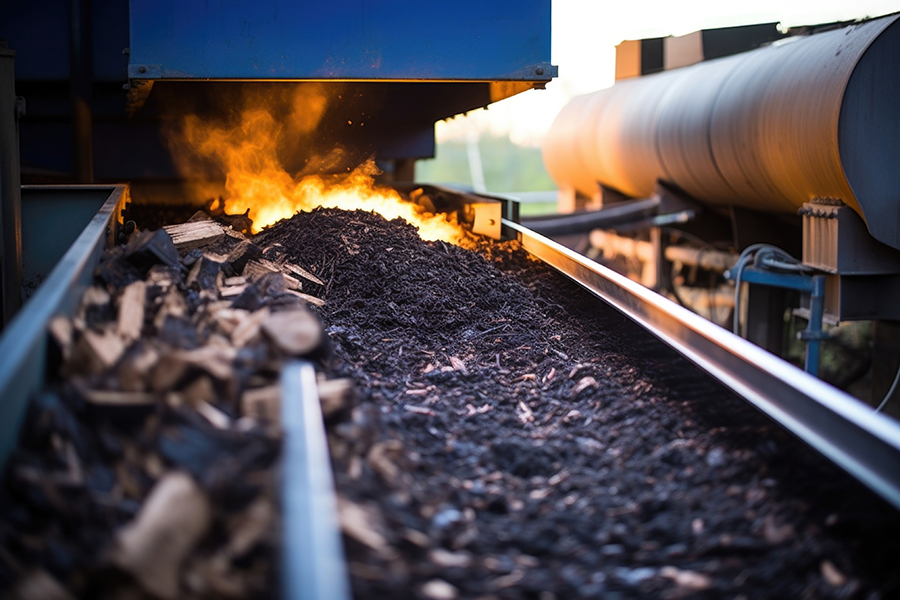In Brazil's Amazon region, dark, nutrient-rich soil known as Terra Preta ("black earth") has sequestered carbon for thousands of years. Likely created by Indigenous communities, these soils not only enhance fertility — they offer a powerful model for modern carbon removal.
While the exact origins of Terra Preta are still somewhat unclear, the reality is that this type of soil amendment can be created in essentially any environment, not just the Amazon, through the controlled heating of biomass. Doing so makes a carbon-rich material known as biochar, which is found in Terra Preta, and has proven to be an effective way to store carbon within the soil, rather than in the atmosphere.
In addition to its climate benefits, biochar projects often serve a critical waste management function, creating new markets for low-value or excess biomass that would otherwise be discarded through landfilling, composting, or open burning in slash piles, thereby turning potential waste into climate value.
Unlike decomposing organic matter, which releases carbon into the atmosphere, turning that same material into biochar transforms it into a stable form of carbon. This makes biochar an increasingly important tool for companies looking to reduce emissions — and the IPCC recognizes it as a form of durable carbon removal.
How is biochar produced?
Biochar is typically produced through pyrolysis, a process that involves the controlled heating of biomass in the absence of oxygen.
With oxygen, the biomass would combust into mostly gas; without oxygen, the biomass breaks down into smaller pieces of solid mass, roughly the size of wood chips, that are primarily composed of carbon, similar to charcoal.
However, unlike charcoal (which is burned as fuel and re-emits carbon), biochar is designed to store carbon. During production, project developers also manage the gases released from pyrolysis to prevent unintended emissions and enhance climate impact.
The dual role of biochar: Carbon removal + soil benefits
Biochar serves two key purposes: one is to remove emissions, and the other is to improve soil health. More specifically, these roles involve the following:
Durable carbon removal
By financing biochar projects or purchasing biochar carbon removal (BCR) credits, companies can offset unavoidable emissions with long-term carbon storage.
Biochar's permanence — typically estimated at hundreds to thousands of years — often exceeds that of other solutions, such as afforestation or soil management projects. While permanence varies based on feedstock, biochar used for climate benefit provides assurances of permanence ranging from 100 to 1000 years.
This is where durable carbon removal, like biochar, plays a role. By taking carbon from organic material and locking it in a stable form for hundreds to thousands of years, biochar helps shift emissions from the fast to the slow carbon cycle — supporting a more stable climate.
While not a substitute for reducing fossil fuel use, biochar can complement decarbonization efforts by delivering long-term carbon storage and buying critical time for deeper societal transitions.
Soil enhancement
When applied to soils (typically after being activated or inoculated with water and nutrients), biochar can:
- Improved soil health due to greater nutrient availability
- Increased water retention
- Enhance crop yields
- Contaminated soil remediation benefits (with ongoing research into applications like heavy metal removal and water filtration)
In turn, these types of soil benefits can provide additional environmental and social benefits, such as increasing the overall carbon sequestration potential of soil, conserving water, reducing erosion, improving food security, and supporting farmers' livelihoods. Biochar's versatility continues to expand, with emerging applications in cement production, filtration systems, and other sectors—earning it a reputation as a "Swiss army knife" of climate solutions.
How biochar fits into a corporate climate strategy
As companies strive to meet their net-zero targets, biochar carbon removal credits provide a scientifically recognized method for addressing residual emissions.
As one of the IPCC working groups reports, "Carbon Dioxide Removal (CDR) is necessary to achieve net zero CO2 and GHG emissions both globally and nationally, counterbalancing 'hard-to-abate' residual emissions."
Still, companies need to carefully consider which biochar credits they purchase, as projects vary significantly in terms of permanence, co-benefits, and potential risks, such as the improper management of volatile gases created from pyrolysis.
That's why it's crucial to select a partner like Anew, which has expertise in project due diligence and deep experience in high-integrity carbon removals. Our work as a developer and marketer of high-quality carbon removal projects has included serving clients such as Microsoft and TotalEnergies, delivering a curated portfolio of carbon projects. Our long-standing work in forestry and climate-smart agriculture provides a strong foundation for understanding and scaling biochar solutions—both in terms of climate impact and practical on-the-ground application.
Speak to a carbon advisor today to see how our portfolio of biochar and other durable CDR credits can complement your organization's emission reduction goals.


